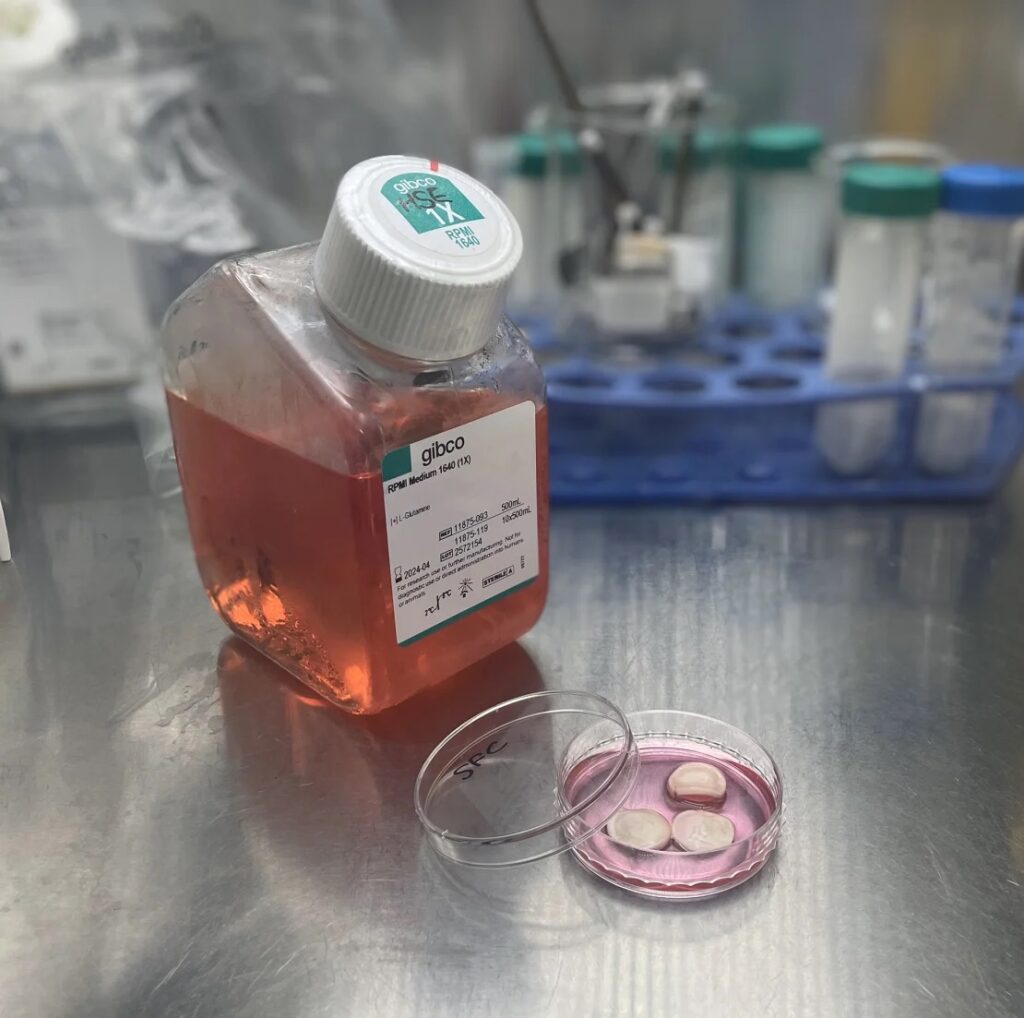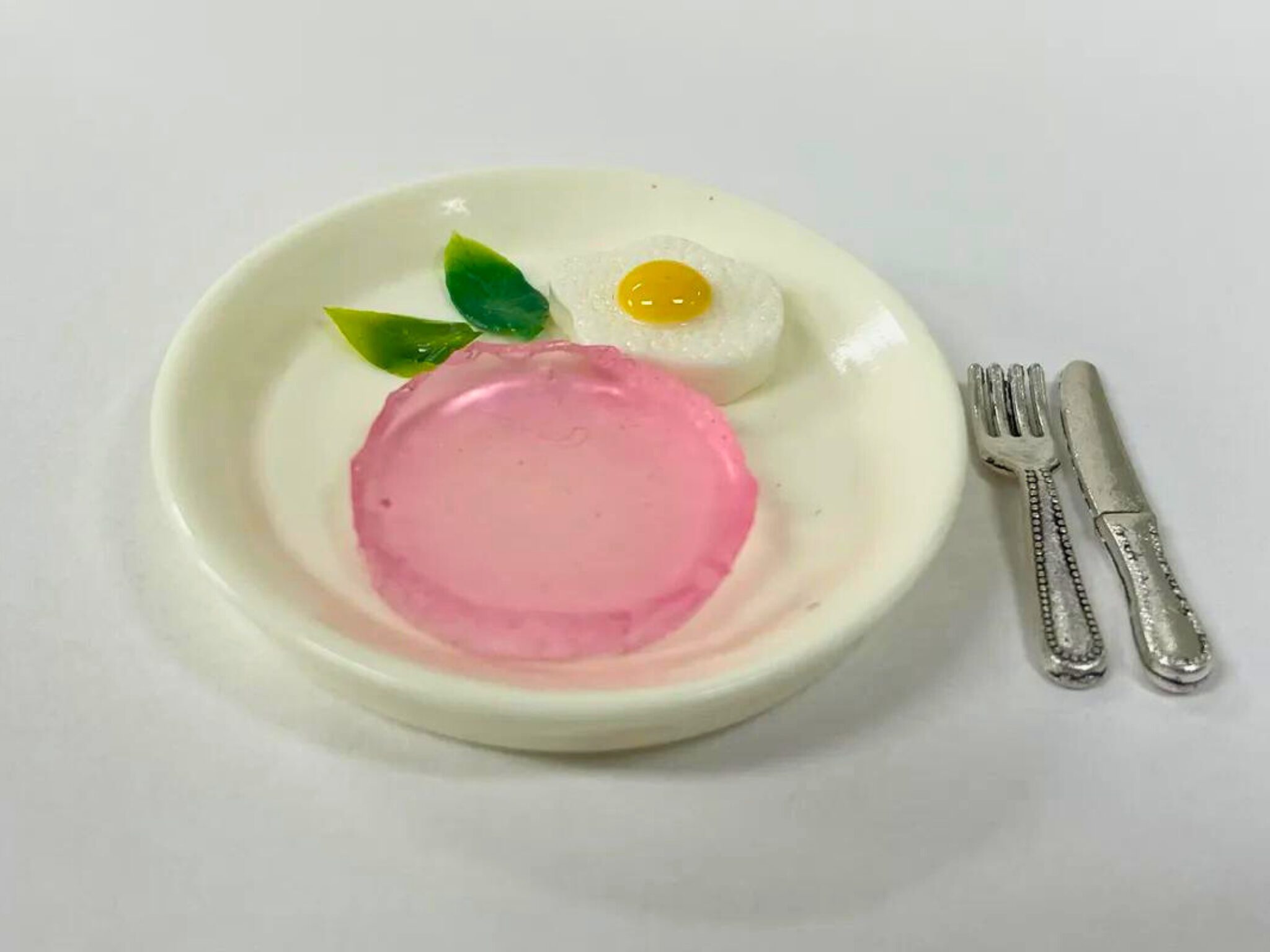Researchers Use Gelatin to Recreate Maillard Reaction for Tastier Cultivated Meat
4 Mins Read
A team of researchers in South Korea have developed a gelatin-based scaffold that replicates the flavour and aroma effects of the Maillard reaction in cultivated meat.
What if you put Jell-O in your steak?
It may sound like a radical idea, but scientists have found that gels can make meat taste better – cultivated meat, that is.
Researchers from Yonsei University in Seoul have created a gelatin-based hydrogel to form a functional scaffold that can recreate the flavours and aromas generated during the Maillard reaction.
Named after French chemist Louis Camille Maillard, this is a chemical reaction that occurs between amino acids and reducing sugars to create a compound that gives browned food its unique flavours when heated between 140°C and 165°C.
In the paper published in the Nature journal, the scientists argue that while previous versions of cultivated meat have recreated the appearance and texture of conventional meat, taste has so far been overlooked. “Flavor is the most important thing to make cultured meat be accepted as real,” lead author Milae Lee told CNN.
Leveraging flavour compounds that ‘switch on’ when heated

The researchers managed to simulate the Maillard reaction by adding what they call “switchable flavour compounds” (or SFCs) into a 3D, temperature-controlled gel to form a scaffold. These compounds (comprising a flavour group and two binding groups) remain stable while the cells are cultivated, and release meaty aromas and flavours when cooked.
Scaffolds are 3D structures that allow animal cells to differentiate and mature, forming what Lee called the “basic composition” of cultivated meat products.
“Many researchers have been digging away to develop various bio-scaffolds that can afford livestock cells to produce 3D structured cultured meat,” co-author Jinkee Hong told BBC Science Focus.
But most of these efforts focused on biological requirements instead of taste and texture, the elements consumers care about, according to Hong. “Because the final tissue… should be recognised as food, we believe technologies to regulate these organoleptic properties of cultured tissues should be studied.”
The aroma chemicals in the pink-coloured gel “switch on” when cooked for five minutes at 150°C, releasing “grilled beef flavours” akin to the ones found after the Maillard reaction.
And although the research was centred on adding meaty and savoury notes, the SFCs can be adapted to create different flavour profiles, such as the fattiness of a juicy rib-eye steak. The scientists tested three compounds and said they produced flavours replicating roasted meat, coffee, roasted nuts, onions and potatoes. “We can diversify and customise the flavour compounds released from the SFC,” Hong told New Scientist.
“All the properties and characteristics of the product can be engineered according to needs,” Lee explained. “For example, if the consumers want the meat to have high protein but zero fat, cultured meat can be engineered to have these properties.”
The researchers also plan to work towards an almost entirely animal-free process by replacing the gelatin (typically made from the bones, cartilage and skins of cattle, pigs and fish) used in the hydrogel.
Potential to apply the research on food-safe substances

Since the research focused on the science behind cultivated meat – rather than ways to commercialise it – the scientists used non-food-grade substances. It’s also why they used an electronic nose (e-nose) that mimics humans’ nosing system to test and compare the aromas of cultivated meat.
“Because the materials and culture medium are not approved as edible materials, we cannot ensure the safety of it,” said Hong. “However, we think that our strategy can also be applied to conventional edible materials, which would be safer than the materials used in this study.”
“Of course, it is not 100% identical to the conventional meat, but it has a meaty flavour and texture,” explained Lee. “But we believe that we can decrease this gap in the future by developing bio-scaffolds that can embody more meaty properties.”
But Hong noted that there’s still a long way to go before such technologies can be commercialised, pointing to the industry’s scalability and cost challenges. Experts suggest that manufacturers have reduced cultivated meat’s cost by 99% in the last decade, but it would still take until at least 2030 for these proteins to reach price parity with conventional beef, chicken, pork, etc.
“There are many researchers developing scaffolds for cultured meat production, but there is still a long way to go to achieve cultured meat that 100% replicates conventional meat,” Hong said.
Lee added: “We believe that we can make significant contributions to the development of cultured meat, which can eventually benefit the global society.”
This isn’t Yonsei University’s only research into novel ways to support the progress of these novel foods. In February, Hong, Lee and their colleagues created a hybrid variety of rice that contained cultivated beef and cow fat cells, and was coated with fish gelatin.
Similar research comes from the Beijing Academy of Food Sciences’ China Meat Research Centre, whose team incorporated cultivated chicken and pork cells into grain varieties to produce rice dishes that release aromas of both meat and rice.



